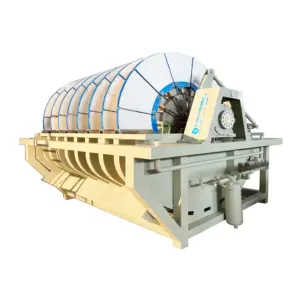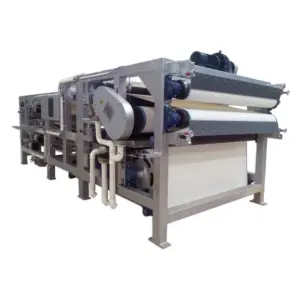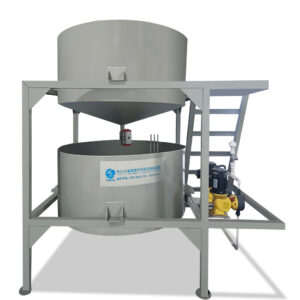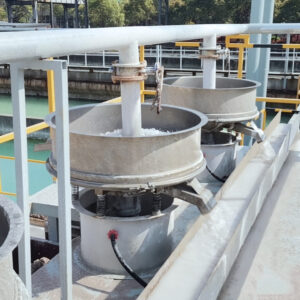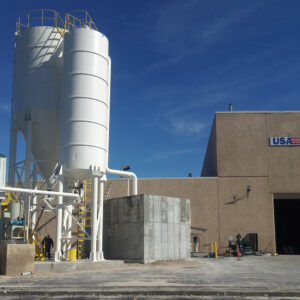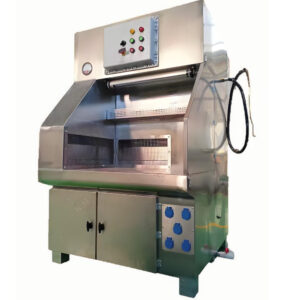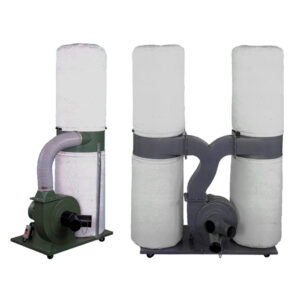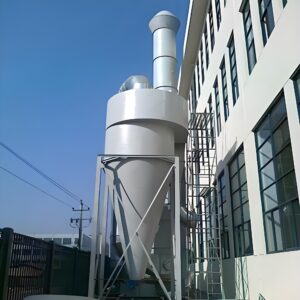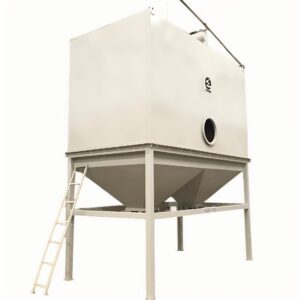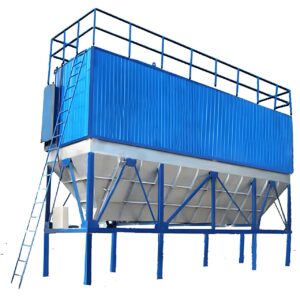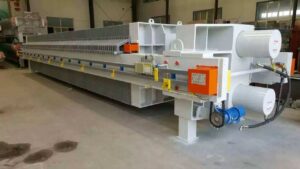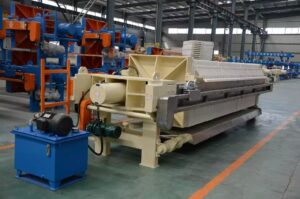Vortex grit chamber systems play a crucial role in wastewater treatment, efficiently removing sand, gravel, and other heavy particles from incoming water. At the heart of these systems lies a critical component: the pump. Selecting the right pump for a vortex grit chamber is essential to ensure optimal performance, reliability, and efficiency in the treatment process. This article delves into the intricacies of pump selection for vortex grit chamber systems, exploring various Pump Types and their applications.
When it comes to vortex grit chamber systems, the choice of pump can significantly impact the overall effectiveness of the treatment process. Factors such as flow rate, particle size, and system design all play a role in determining the most suitable pump type. From centrifugal pumps to positive displacement options, each pump type offers unique characteristics that can be leveraged to optimize grit removal and system performance.
As we explore the world of pump selection for vortex grit chamber systems, we'll examine the key considerations that engineers and plant operators must take into account. We'll discuss the pros and cons of various pump types, their suitability for different grit chamber designs, and the impact of pump selection on energy efficiency and maintenance requirements.
Proper pump selection is crucial for the optimal performance of vortex grit chamber systems, directly impacting the efficiency of grit removal and overall wastewater treatment process.
What are the primary types of pumps used in vortex grit chamber systems?
Vortex grit chamber systems employ a variety of pump types, each suited to different operational requirements and system designs. The most common pump types used in these systems include centrifugal pumps, submersible pumps, and positive displacement pumps. Each of these pump types offers unique advantages and is chosen based on specific system needs.
Centrifugal pumps are widely used in vortex grit chamber systems due to their ability to handle large volumes of water and their relatively simple design. Submersible pumps, on the other hand, are ideal for installations where space is limited or where the pump needs to be located within the grit chamber itself. Positive displacement pumps, while less common, can be useful in situations where precise flow control is required.
The choice of pump type depends on factors such as the expected flow rate, the size and density of grit particles, and the overall system design. Engineers must carefully consider these factors to ensure the selected pump can efficiently remove grit while maintaining the vortex flow pattern within the chamber.
Centrifugal pumps are the most commonly used pump type in vortex grit chamber systems, offering a balance of performance, reliability, and cost-effectiveness for most applications.
| Pump Type | Advantages | Disadvantages |
|---|---|---|
| Centrifugal | High flow rates, simple design | Less efficient at low flow rates |
| Submersible | Space-saving, can operate submerged | Higher maintenance requirements |
| Positive Displacement | Precise flow control, handles viscous fluids | More complex, higher initial cost |
How do centrifugal pumps contribute to vortex grit chamber efficiency?
Centrifugal pumps are the workhorses of many vortex grit chamber systems, playing a crucial role in maintaining the vortex flow pattern that is essential for effective grit removal. These pumps use rotational energy to create flow, making them well-suited for handling large volumes of water with suspended grit particles.
The efficiency of centrifugal pumps in vortex grit chamber applications stems from their ability to generate the necessary flow rates and pressures to sustain the vortex motion. This constant circulation helps to keep grit particles suspended, allowing them to be effectively separated from the water. Additionally, the simple design of centrifugal pumps makes them reliable and relatively easy to maintain, which is crucial for continuous operation in wastewater treatment plants.
However, the effectiveness of centrifugal pumps in vortex grit chambers can be influenced by factors such as impeller design, pump speed, and system hydraulics. Proper sizing and selection of centrifugal pumps are essential to ensure they operate at their best efficiency point (BEP) while meeting the specific requirements of the grit chamber system.
Centrifugal pumps are highly effective in vortex grit chamber systems due to their ability to generate the high flow rates necessary to maintain the vortex pattern, which is crucial for efficient grit separation.
| Centrifugal Pump Feature | Impact on Grit Chamber Efficiency |
|---|---|
| Impeller Design | Affects flow pattern and particle suspension |
| Pump Speed | Influences vortex intensity and grit removal rate |
| Discharge Pressure | Determines flow velocity and system hydraulics |
| Efficiency Curve | Affects energy consumption and operating costs |
What role do submersible pumps play in compact vortex grit chamber designs?
Submersible pumps have gained popularity in vortex grit chamber applications, particularly in compact system designs where space is at a premium. These pumps are designed to operate while fully submerged in the wastewater, offering several advantages in grit chamber installations.
The compact nature of submersible pumps allows for more flexible system designs, as they can be placed directly within the grit chamber or in adjacent sumps. This eliminates the need for long suction pipes and reduces the overall footprint of the system. Additionally, submersible pumps are less prone to cavitation issues since they are always primed, which can be particularly beneficial when dealing with grit-laden wastewater.
However, the use of submersible pumps in vortex grit chambers also presents some challenges. These pumps may require more frequent maintenance due to their submerged operation, and access for repairs can be more difficult. Engineers must carefully consider the trade-offs between space savings and maintenance requirements when opting for submersible pumps in grit chamber designs.
Submersible pumps offer significant space-saving benefits in vortex grit chamber designs, allowing for more compact installations without compromising on performance.
| Submersible Pump Characteristic | Benefit in Grit Chamber Application |
|---|---|
| Compact Design | Allows for smaller system footprint |
| Submerged Operation | Reduces priming issues and cavitation risk |
| Flexible Placement | Enables optimized system hydraulics |
| Self-Cooling | Improved reliability in continuous operation |
How do positive displacement pumps enhance precision in grit removal systems?
While less common in vortex grit chamber applications, positive displacement pumps offer unique advantages that can enhance the precision of grit removal in certain scenarios. These pumps operate by trapping a fixed volume of fluid and forcing it into the discharge pipe, providing consistent flow rates regardless of pressure variations.
The precise flow control offered by positive displacement pumps can be particularly beneficial in grit chamber systems where maintaining a specific flow rate is critical for optimal vortex formation and grit separation. This level of control allows for fine-tuning of the system's performance, potentially improving grit removal efficiency and reducing energy consumption.
Positive displacement pumps also excel at handling fluids with higher viscosities or solid content, which can be advantageous in grit chambers dealing with particularly challenging wastewater streams. However, these pumps are generally more complex and expensive than centrifugal alternatives, and their use in vortex grit chambers must be carefully evaluated based on specific system requirements.
Positive displacement pumps provide unparalleled flow control in vortex grit chamber systems, allowing for precise optimization of the vortex pattern and potentially improving grit removal efficiency.
| Positive Displacement Pump Feature | Advantage in Grit Removal |
|---|---|
| Constant Flow Rate | Maintains optimal vortex conditions |
| High Efficiency at Low Flows | Suitable for variable influent conditions |
| Handles High Viscosity Fluids | Effective with challenging wastewater |
| Precise Dosing Capability | Allows for accurate chemical addition if needed |
What factors should be considered when selecting pumps for vortex grit chambers?
Selecting the right pump for a vortex grit chamber system requires careful consideration of numerous factors. The pump choice can significantly impact the system's performance, energy efficiency, and long-term reliability. Engineers must evaluate a range of parameters to ensure the selected pump meets the specific needs of the grit chamber design.
Key factors to consider include the expected flow rates, the characteristics of the influent wastewater (including grit particle size and concentration), the desired vortex intensity, and the overall system hydraulics. Additionally, considerations such as energy efficiency, maintenance requirements, and lifecycle costs play crucial roles in the pump selection process.
It's also important to consider the pump's ability to handle the abrasive nature of grit-laden wastewater. Materials of construction, impeller design, and wear resistance are critical factors that can affect the pump's longevity and performance in these challenging conditions.
The selection of pumps for vortex grit chambers must balance performance requirements with long-term reliability and efficiency, taking into account the unique challenges posed by grit-laden wastewater.
| Selection Factor | Importance in Pump Choice |
|---|---|
| Flow Rate Range | Determines pump size and type |
| Grit Characteristics | Influences wear resistance requirements |
| System Hydraulics | Affects pump efficiency and performance |
| Energy Efficiency | Impacts operational costs |
| Maintenance Needs | Influences total cost of ownership |
How does pump selection impact the energy efficiency of vortex grit chamber systems?
Energy efficiency is a critical consideration in the design and operation of wastewater treatment plants, including vortex grit chamber systems. The selection of pumps can have a significant impact on the overall energy consumption of these systems, making it an important factor in the decision-making process.
Choosing a pump that operates at or near its best efficiency point (BEP) for the majority of its runtime can lead to substantial energy savings over the life of the system. This often involves carefully matching the pump's characteristics to the specific flow and pressure requirements of the grit chamber. Variable frequency drives (VFDs) can also be employed to adjust pump speed and maintain efficiency across a range of operating conditions.
Additionally, the pump's design and materials can affect its efficiency over time. Pumps that are resistant to wear and maintain their performance characteristics even when handling abrasive grit can help ensure long-term energy efficiency. Regular maintenance and timely replacement of worn components are also crucial for maintaining optimal energy performance.
Proper pump selection and sizing can lead to significant energy savings in vortex grit chamber systems, with potential reductions in energy consumption of up to 30% compared to poorly matched pumps.
| Energy Efficiency Measure | Potential Impact |
|---|---|
| Operating at BEP | 10-15% energy savings |
| Use of VFDs | 20-50% energy reduction |
| Proper Sizing | Avoids 15-25% overconsumption |
| Regular Maintenance | Maintains efficiency over time |
What role does pump reliability play in the continuous operation of vortex grit chambers?
Reliability is paramount in wastewater treatment systems, and vortex grit chambers are no exception. The continuous operation of these systems is critical for effective grit removal and overall plant performance. As such, the reliability of the pumps used in vortex grit chambers plays a vital role in ensuring uninterrupted treatment processes.
Pumps in grit chamber applications face challenging conditions, including the constant presence of abrasive particles and potential debris. Selecting pumps with robust construction, wear-resistant materials, and appropriate sealing systems is essential for long-term reliability. Additionally, features such as self-cleaning impellers and anti-clogging designs can help maintain consistent performance and reduce the frequency of maintenance interventions.
Redundancy is another important consideration in pump selection for vortex grit chambers. Many systems incorporate multiple pumps, allowing for continuous operation even during maintenance or in the event of a pump failure. This redundancy ensures that the grit removal process remains effective at all times, protecting downstream equipment and maintaining overall treatment efficiency.
Pump reliability is crucial for the continuous operation of vortex grit chambers, with well-designed and properly maintained pumps capable of operating for 20,000 hours or more between major overhauls.
| Reliability Factor | Impact on Grit Chamber Operation |
|---|---|
| Material Selection | Determines wear resistance and longevity |
| Redundancy | Ensures continuous operation during maintenance |
| Anti-Clogging Features | Reduces downtime and maintenance needs |
| Monitoring Systems | Enables predictive maintenance strategies |
How can innovative pump designs improve the performance of vortex grit chamber systems?
Innovation in pump design continues to drive improvements in the performance and efficiency of vortex grit chamber systems. As PORVOO and other industry leaders push the boundaries of pump technology, new designs are emerging that offer enhanced capabilities for grit removal applications.
One area of innovation is in impeller design, with new configurations that improve the handling of grit particles while maintaining high efficiency. Advanced computational fluid dynamics (CFD) modeling allows for the optimization of impeller shapes to create ideal flow patterns within the grit chamber, enhancing separation efficiency.
Another innovative approach is the development of "smart" pumps that incorporate sensors and advanced control systems. These pumps can adapt to changing conditions in real-time, adjusting their operation to maintain optimal performance and efficiency. This adaptability can be particularly beneficial in vortex grit chambers, where influent characteristics can vary significantly over time.
Materials science is also playing a role in pump innovation, with new alloys and coatings offering improved wear resistance and longer service life in abrasive environments. These advancements can lead to reduced maintenance requirements and improved long-term reliability of grit chamber systems.
Innovative pump designs, such as those incorporating advanced impeller configurations and smart control systems, can improve vortex grit chamber performance by up to 20% compared to traditional pump designs.
| Innovation Area | Potential Benefit |
|---|---|
| Advanced Impeller Design | Improved flow patterns and separation efficiency |
| Smart Control Systems | Real-time adaptation to changing conditions |
| Wear-Resistant Materials | Extended service life and reduced maintenance |
| Integrated Monitoring | Predictive maintenance and optimized operation |
In conclusion, the selection of pumps for vortex grit chamber systems is a critical aspect of wastewater treatment plant design and operation. The right pump choice can significantly impact the efficiency of grit removal, energy consumption, and overall system reliability. As we've explored, various pump types, including centrifugal, submersible, and positive displacement pumps, each offer unique advantages in grit chamber applications.
The key to successful pump selection lies in carefully considering the specific requirements of the grit chamber system, including flow rates, grit characteristics, and system hydraulics. Balancing performance needs with energy efficiency and long-term reliability is essential for optimizing the operation of vortex grit chambers.
As pump technology continues to evolve, innovative designs and smart control systems offer new opportunities to enhance the performance of grit removal systems. By staying informed about these advancements and carefully evaluating pump options, engineers and plant operators can ensure their vortex grit chamber systems operate at peak efficiency, contributing to more effective and sustainable wastewater treatment processes.
External Resources
An introduction to basic pump types – Grundfos – This resource provides a comprehensive overview of the two main pump types: centrifugal pumps and positive displacement pumps. It also details various common pump types such as end-suction pumps, inline pumps, submersible pumps, and more.
Pump – Wikipedia – Although the link is to a page on filter pumps, the Wikipedia article on pumps in general covers the basic types of pumps, including centrifugal, positive-displacement, and axial-flow pumps, along with specific examples like gear pumps and screw pumps.
Types & Uses | Pump Selection Guide – Gainesville Industrial Electric – This guide categorizes pumps into positive displacement and dynamic pumps, and discusses various popular pump types such as submersible pumps, end-suction pumps, multi-stage pumps, and vertically immersed pumps.
TYPES OF PUMPS AND THEIR WORKING PRINCIPLES – This article classifies pumps into dynamic (kinetic) pumps and positive displacement pumps, and delves into the working principles of centrifugal pumps, vertical pumps, reciprocating pumps, and rotary type pumps.
Pump Types and Applications – Engineering ToolBox – This resource lists various pump types, including centrifugal, positive displacement, submersible, and jet pumps, along with their typical applications and characteristics.
Centrifugal Pumps vs Positive Displacement Pumps – Pumps & Systems – This article compares and contrasts centrifugal pumps and positive displacement pumps, highlighting their differences in operation, applications, and suitability for various fluids.
Pump Types: A Guide to Selecting the Right Pump – Thomasnet – This guide provides an overview of different pump types, including their advantages, disadvantages, and typical applications, helping users select the right pump for their needs.
How Pumps Work: Types of Pumps and Their Applications – Sciencing – This article explains the basic principles of how pumps work and describes several common types of pumps, including centrifugal, positive displacement, and jet pumps, along with their uses in various industries.
